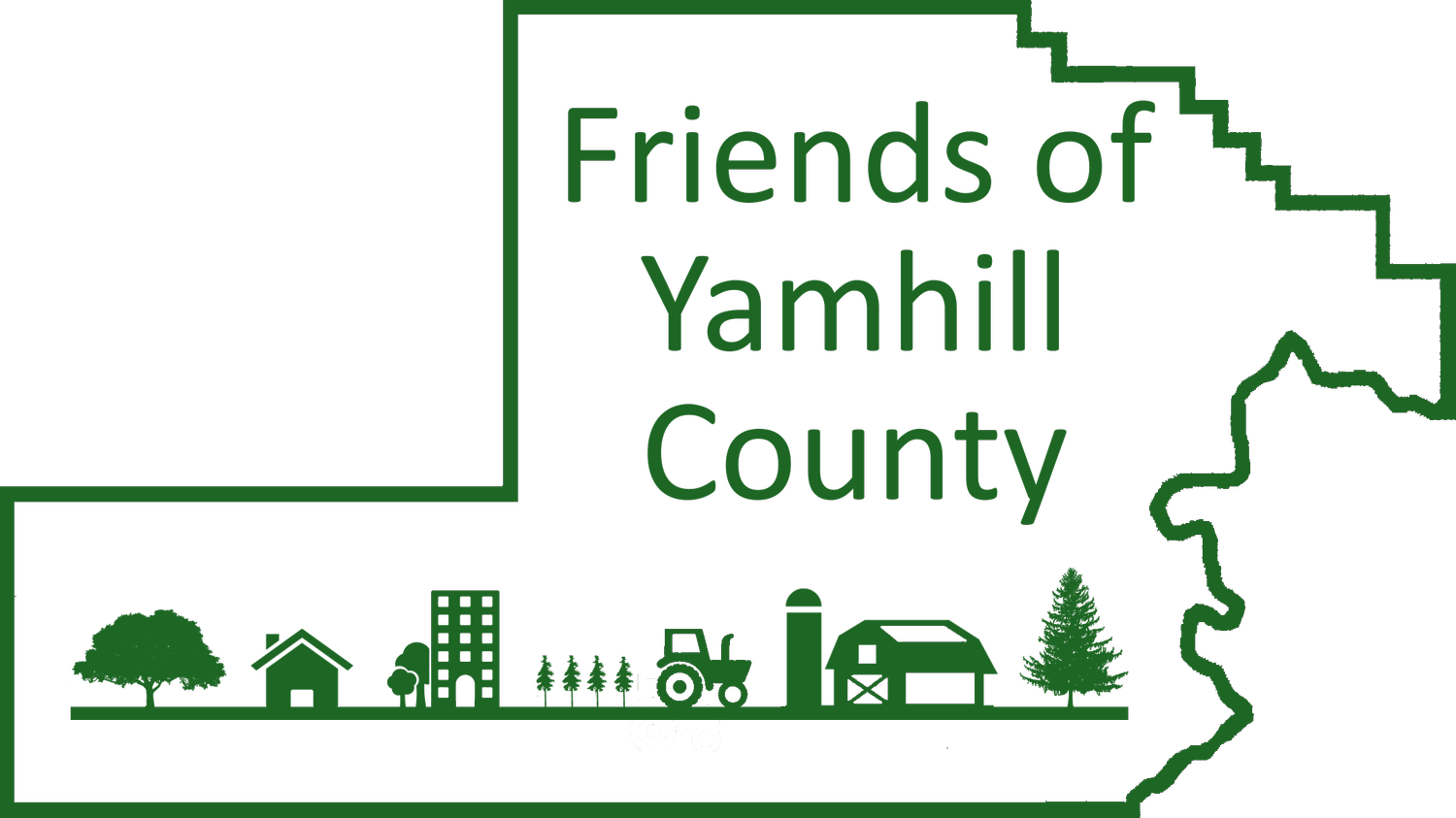
Oregon’s Land Use Goals
You can download the text of the statewide goals here.
Keep reading for a plain-language explanation of those goals that apply in Yamhill County.
1. Citizen Involvement
Calls for "the opportunity for citizens to be involved in all phases of the planning process." Each city and county must have a citizen involvement program containing six specified components. Local governments must have a committee for citizen involvement (CCI) to monitor and encourage public participation in planning.
2. Land Use Planning
Outlines the basic procedures of Oregon's statewide planning program. It says that land use decisions are to made in accordance with a comprehensive plan, and that suitable "implementation ordinances" to put the plan's policies into effect must be adopted. It requires that plans be based on "factual information;" that local plans and ordinances be coordinated with those of other jurisdictions and agencies; and that plans be reviewed periodically and amended as needed. Goal 2 also contains standards for taking exceptions to statewide goals. An exception may be taken when a statewide goal cannot or should not be applied to a particular area or situation.
3. Agricultural Lands
If you've heard the terms "exclusive farm use" or EFU lands, this goal is the reason why. It states that agricultural lands will be "preserved and maintained for farm use, consistent with existing and future needs for agricultural products, forest, and open space," and requires counties to inventory such lands.
4. Forest Lands
Defines forest lands and requires counties to inventory them and adopt policies and ordinances that will "conserve forest lands for forest uses."
5. Open Spaces, Scenic and Historic Areas, and Natural Resources
Covers more than a dozen natural and cultural resources such as wildlife habitats and wetlands. Establishes a process for each resource to be inventoried and evaluated. If a resource or site is found to be significant, local government has three policy options: preserve the resource, allow proposed uses that conflict with it, or strike some sort of balance between the resource and the uses that would conflict with it.
6. Air, Water, and Land Resources Quality
Requires local comprehensive plans and implementing measures to be consistent with state and federal regulations on matters such as air and groundwater pollution.
7. Areas Subject to Natural Disasters and Hazards
Deals with development in places subject to natural hazards such as floods or landslides. It requires that cities and counties apply "appropriate safeguards" (floodplain development regulations, for example) when planning for development there.
8. Recreation Needs
Calls for each community to evaluate its areas and facilities for recreation and develop plans to deal with the projected demand for them. It also sets forth detailed standards for expedited siting of destination resorts.
9. Economic Development
Calls for diversification and improvement of the economy. It calls for cities to inventory commercial and industrial lands, project future needs for such lands, and plan and zone enough land to meet those needs.
10. Housing
Specifies that each city must plan for and accommodate needed housing, including all types such as multifamily and manufactured housing. It requires each city to inventory its “buildable” residential lands, project future needs for such lands, and plan and zone enough buildable land to meet those needs. It also prohibits local plans from discriminating against needed housing types.
11. Public Facilities and Services
Calls for efficient planning of public services such as sewers and drinking water. The central concept is that public services should to be planned in accordance with a community's needs and capacities rather than be forced to respond to development as it occurs.
12. Transportation
Aims to provide "a safe, convenient and economic transportation system." It asks for communities to address the needs of the "transportation disadvantaged." It guides the contents of each city and county transportation system plan, or “TSP.”
13. Energy
Declares that "land and uses developed on the land shall be managed and controlled so as to maximize the conservation of all forms of energy, based upon sound economic principles."
14. Urbanization
Requires cities to estimate future growth and needs for land to accommodate that growth, and then plan and zone enough land to meet those needs. It calls for each city to establish an "urban growth boundary" (UGB) to "identify and separate urbanizable land from rural land." It specifies factors that must be considered in drawing up a UGB. It also lists criteria to be applied when undeveloped land within a UGB is to be converted to urban uses.
This goal also addresses the appropriate intensity of use outside of UGBs to ensure that counties do not permit the urbanization of areas planned to remain rural. This controls residential density and commercial and industrial building size in the rural parts of the county.
15. Willamette Greenway
Sets forth procedures for administering the greenway that protects the Willamette River, the eastern boundary for much of Yamhill County.
What Is Land Use Planning? More Resources.
